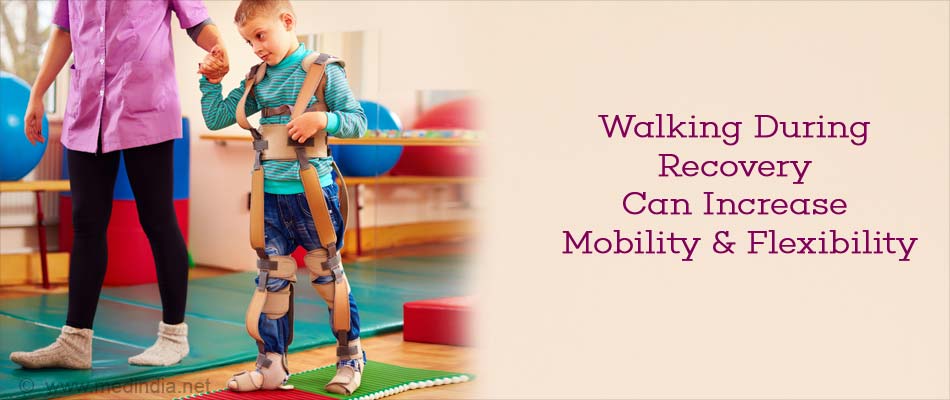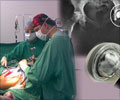What is Hamstring Lengthening Surgery?
Hamstring lengthening surgery is a procedure done to relieve pain and tightness in the hamstring muscles and to improve posture. It is generally recommended for children suffering from cerebral palsy.
Structure & Function of the Hamstring Muscles in Brief
The hamstring muscles in humans are a group of three muscles in the back of the thighs. These include the semimembranosus, the semitendinosus and the biceps femoris, arranged from the inner to the outer aspect of the thigh. They extend from the back of the hip bones and the upper thigh bone to the lower thigh bone and the upper leg bones. The hamstrings help to bend the knees and move the hips backward.
The hamstring lengthening procedure is generally performed in children with cerebral palsy. The muscle tone in these children is high, resulting in the tightening of the hamstring muscles. As the children grow, the muscles become permanently stiff, that is, they undergo contractures. The children walk with bent knees, and are unable to straighten their knees while sitting, thereby assuming a hunched posture. The hamstring lengthening procedure is particularly useful for maintaining an upright posture while walking as well as allowing mobility in the knees, thereby averting a hunched posture while sitting.
Why is Hamstring Lengthening Surgery Done?
The hamstring lengthening surgery is carried out to relieve lower limb contractures and to increase the ability of the knees to straighten out i.e. undergo extension. This helps the patient to:
- Improve gait
- Improve sitting and lying postures
What are the Tests Required Before Hamstring Lengthening Surgery?
Before your child undergoes the procedure, the surgeon will carry out a thorough physical examination and check the range of motion of the lower limbs. This will help the surgeon to recognize the degree of the problem and factors that could predict the outcome or the complications of the procedure.
Routine Tests:
For all patients who have to undergo an elective surgery (which is more planned), routine tests are required and include the following:
- Blood tests like hemoglobin levels, blood group, liver and kidney function tests
- Urine tests
- ECG to study the electrical activity of the heart
- Chest x-ray
How do you Prepare Before the Hamstring Lengthening Surgery?
Type of Anesthesia - Hamstring lengthening surgery is done under general anesthesia. Your child will be asleep during the procedure and will not be aware of what is going on.

Pre-operative Check-up - Routine tests as indicated above are ordered a few days before the surgery. Admission is required a day or two before the surgery. You will be advised to stop administering medications to your child that could increase the chances of bleeding a few days before the procedure. The surgeon will explain the procedure prior to the surgery and an informed consent form will need to be signed.
Fasting Before Surgery - Overnight fasting is required and occasionally intravenous (IV) fluid may be required to keep your child well hydrated. Sedation is sometimes required for good overnight sleep before the surgery.
Shift from the Ward or Room to the waiting area in the Operating Room - An hour or two before the surgery, your child will be shifted to the operating room waiting area on a trolley. Once the surgical room is ready, your child will be shifted to the operating room.
Shift to the Operating Room - The ambience in the operating room can sometimes be very daunting and a small amount of sedation may be used to overcome anxiety. From the trolley, your child will be shifted on to the operating table.
Anesthesia Before Surgery - The anesthetist will inject drugs through an intravenous line and make your child inhale some gases through a mask that will put your child in deep sleep for anesthesia. Once your child is in deep sleep, a tube will be inserted into the mouth and windpipe to administer the anesthesia gases to overcome pain and keep your child comfortable.
Once asleep, your child will be placed lying on the stomach on the operating table. Padding will be provided at all the pressure points. The lower extremity will be prepped and draped in the standard surgical fashion, prior to commencing the surgery.
What Happens During the Hamstring Lengthening Surgery?
An incision is made on the back of the thigh in the lower part. An incision below the buttock could be required if your child has a hunched posture while sitting.
Dissection is carried out to sequentially expose the semitendinosus, semimembranosus and biceps femoris hamstring muscles, using electrocautery or dissecting scissors. These are then lengthened by cutting the tendinous part of the muscle and allowing it to stretch out. This is the most common type of procedure. Alternatively, a “Z” type of cut can be made, followed by sliding apart the ends of the muscles and suturing them in a lengthened position. The wound is then closed by suturing and covered with a dressing.
What Happens After the Hamstring Lengthening Surgery?
Waking up from Anesthesia - Once the surgery is over, your child will wake up and the tube down the wind pipe will be removed. Your child will be asked to open the eyes before the tube is removed, but will remain sedated. Once the tube is out, your child may have cough and sometimes nausea. Once fully awake, your child will be shifted on a trolley and taken to the recovery room.
Recovery Room - In the recovery room, a nurse will monitor your child’s vitals and observe him/her for an hour or two before shifting to the room or a ward.
Post-operative Recovery - Painkillers may be prescribed depending on the extent of the pain. Knee immobilizers will be fitted. Your child will usually be discharged in a day if there are no complications. Certain exercises will be advised by the doctor.
Management and Recovery after Hamstring Lengthening Surgery
During the recovery period, your child will be managed by following the doctor’s instructions.
- Full weight-bearing by the operated limb is advisable as soon as possible.
- The doctor will recommend removing the dressing at home 3-5 days after the surgery.
- Your child will be advised to wear a knee immobilizer for 16-18 hours daily for 3 weeks.
- Metatarsal pads may also be required to be worn to relieve pressure from the ball of the foot while walking, as per the doctor’s advice.
- Physical therapy will be started within a week of the surgery. A trained physiotherapist will supervise the exercises.
- Diazepam may be prescribed to manage painful spasms for 5-7 days following the surgery.

A follow-up appointment will be scheduled in 3-4 weeks following the surgery. During the post-operative check-up:
- The wound will be observed to see if it has healed properly.
- Complications, if present, will be detected and handled.
- You will be advised to remove the knee immobilizer during the day, but continue to keep it on at night for 6-12 months.
What are the Risks & Complications of Hamstring Lengthening Surgery?
As with any type of surgery, hamstring lengthening surgery has the risk of bleeding. Moreover, complications arising from infections can also occur. Although the surgery can rectify abnormalities in gait and posture, there might be a need for a repeated surgery in the future. This is because, as the child grows, the same muscles or another group of muscles may become tight and lead to contractures that will require surgical intervention.
Health Tips
- Opt for hamstring lengthening surgery in case of postural and gait problems that cannot be corrected by physical therapy and medications: This surgery will improve posture as well as alleviate pain due to tightening of the hamstring muscles and promote healthy growth.
- Exercise the lower limbs regularly: Exercises should be performed after the surgery as per the advice of the physiotherapist.
- Encourage walking during recovery after surgery: As an adjunct to the daily exercises, trying to walk on the operated leg will increase mobility and flexibility. This will speed up the recovery.

 MEDINDIA
MEDINDIA

 Email
Email








